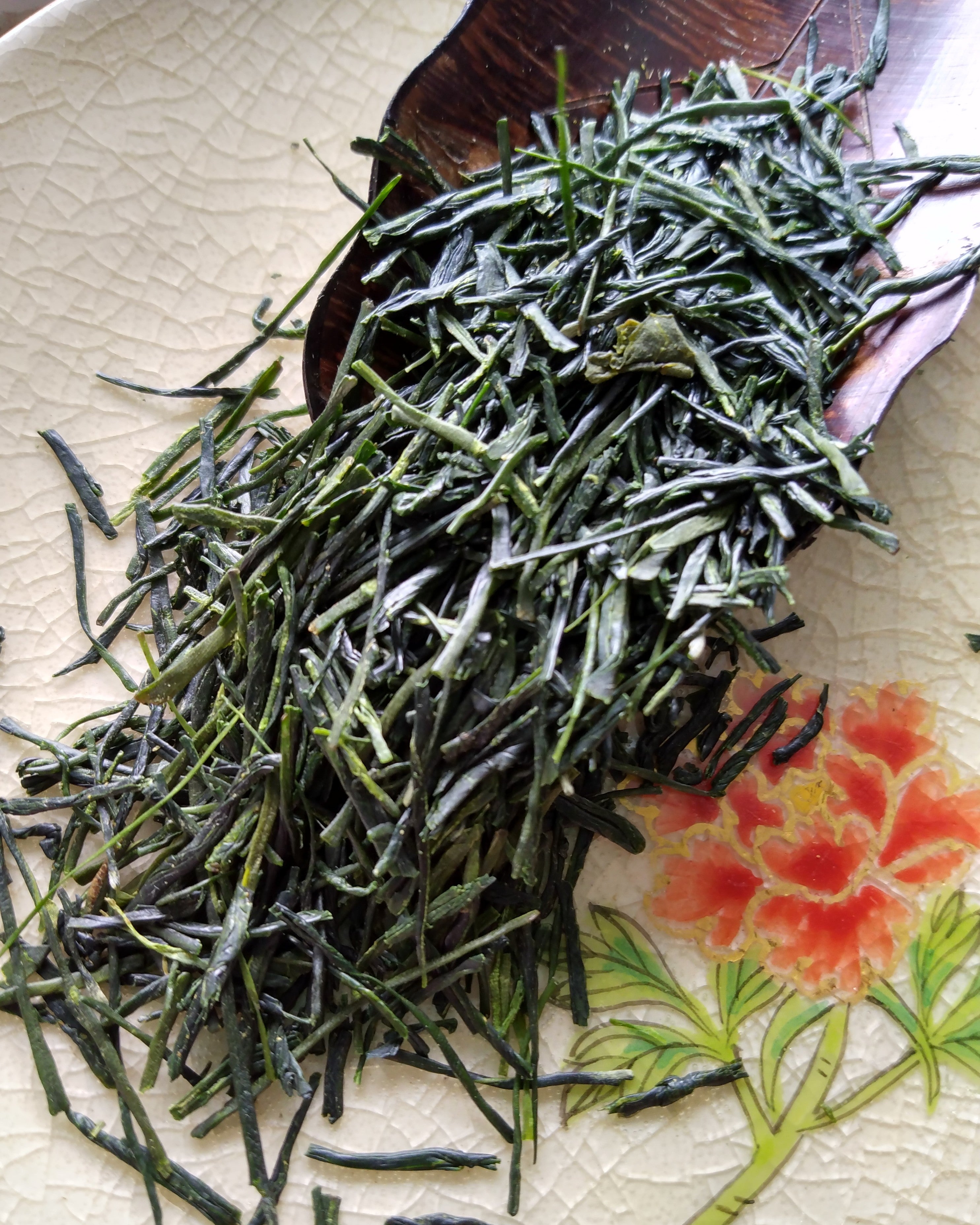Description
Noren, Shop or House Curtain, Vintage Japanese Textile. Tsutsugaki, hand-drawn paste-resist indigo-dyed hemp cloth (asa). The two panel noren has an exquisite design of the Three Friends of Winter; Pine, Plum, and Bamboo. They all symbolize resilience, heartiness, and longevity as the Pine is evergreen, the Plum is the first tree to bloom after a harsh winter, and the Bamboo is resilient bending against wind and snow. The designer masterfully and elegantly interlinks the three symbols with a branch or root of the pine bough, a ring of bamboo, and a crescent moon encircling the plum. The rough hemp fiber is highly valued in Japan for the rustic beauty it brings to a home or business. This is a beautiful example of design, weaving, and indigo dye work. L. 59"(150cm) x W. 18"(46cm).
The Thiel Family has graciously allowed me to select a number of items from their parents’ extensive private collection of Japanese and Japanese-inspired crafts to offer here. We are offering them at great values so that they may find new loving homes, and ALL profits are being donated to Midori-sensei’s long-term care fund. Below is some brief information on Philip Thiel and Midori Kono Thiel.
Philip Thiel and Midori Kono Thiel were a decades-long dynamic duo of support and contributions to the Art, Architecture, and Cultural communities of the greater Seattle area and beyond. Their contributions are far too numerous to list here; but they were, to say the least, immense, generous, and sure to leave a lasting legacy. They were also passionate collectors of Japanese arts and crafts; including textiles, ceramics, architectural pieces, wood, lacquer ware, paintings, prints, folk toys, and reference books on all of the above.
Midori Kono Thiel (1933 -) has long been widely recognized for her artistic achievements, her teaching, and her cultural contributions to the Japanese art and culture communities of the Pacific Northwest. After completing her MA in Painting at UC Berkeley, she went to Japan on a UC Traveling Fellowship to study woodblock printing with well-known hanga artists Hiratsuka Un’ichi and Hagiwara Hideo. Over the years, she has studied with numerous Japanese artists in Japan, and at workshops in the U.S. by visiting Japanese artists, in the fields of Sumi and Nihonga painting, calligraphy, print making, weaving, dyeing, music (koto and shamisen), Noh and Kyogen performance, and Nihon Buyo dancing. She had become so well-accomplished in several of these areas that she has received numerous awards in the U.S. and in Japan for her artwork, and she has taught Japanese arts and culture to a variety of students in the region from young children, to university students, to senior adults.
Midori-sensei’s contributions to the cultural community of Seattle have been recognized and awarded by the Japanese Consul General in Seattle for fostering US-Japan relations, and from the Seattle Cherry Blossom Festival for furthering the understanding of Japanese culture in the US. She was a long-time artist in residence for local schools, and for the King County and Seattle Arts Commissions. She was a long-time supporter and performer for the Seattle Japanese Garden, and for numerous cultural festivals across the region over many years. If something “Japanese” was happening, Midori-sensei was always there performing and making invaluable educational contributions.
Philip Thiel (1920-2014) had careers in Naval Architecture (teaching at MIT); as a working (“dry land”) architect at the firms of Bauhaus School architects Marcel Breuer (NY) and Walter Gropius’ The Architects’ Collaborative (Cambridge); as a professor of Architecture and Environmental Design at UC Berkeley; and as Professor Emeritus of Architecture and Urban Planning at the University of Washington, in Seattle. His deep love for the art, architecture, and culture of Japan began with meeting Japanese architect and educator Kiyoshi Seike while at The Architects’ Collaborative; and with meeting his future wife of 59 years, Midori Kono, while at UC Berkeley. This interest led several research visits to Japan, and to teaching Architecture at the Tokyo Institute of Technology and at the Sapporo School of Design.
Although his long teaching career and published architecture books have surely impacted thousands of students from many parts of the world, he was also a community activist in the greater Seattle area. His professional expertise and interests in public spaces, environmental psychology, and the human experience of moving through built environments led him to becoming an important community advocate for park spaces and public plazas in Seattle.







